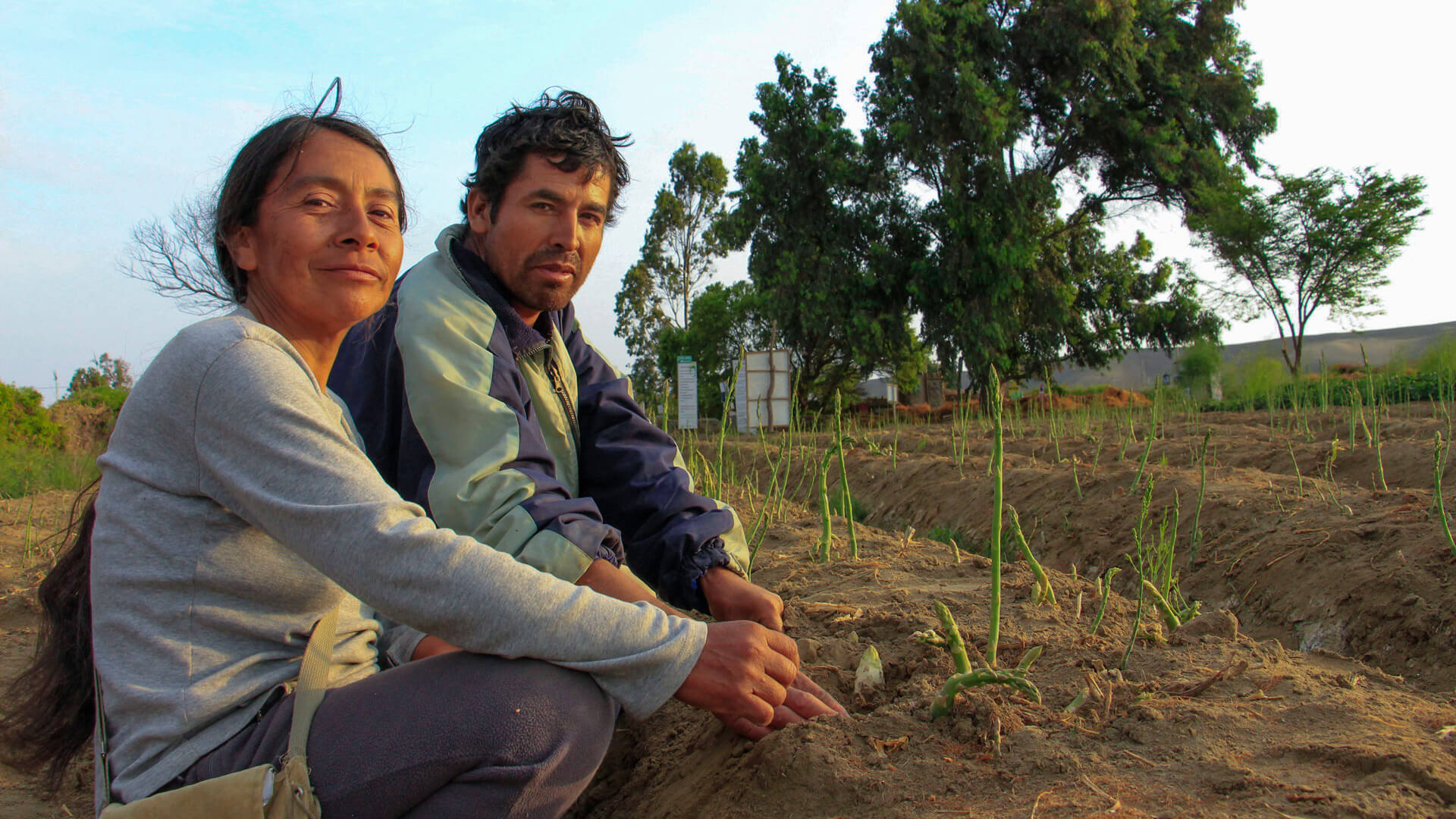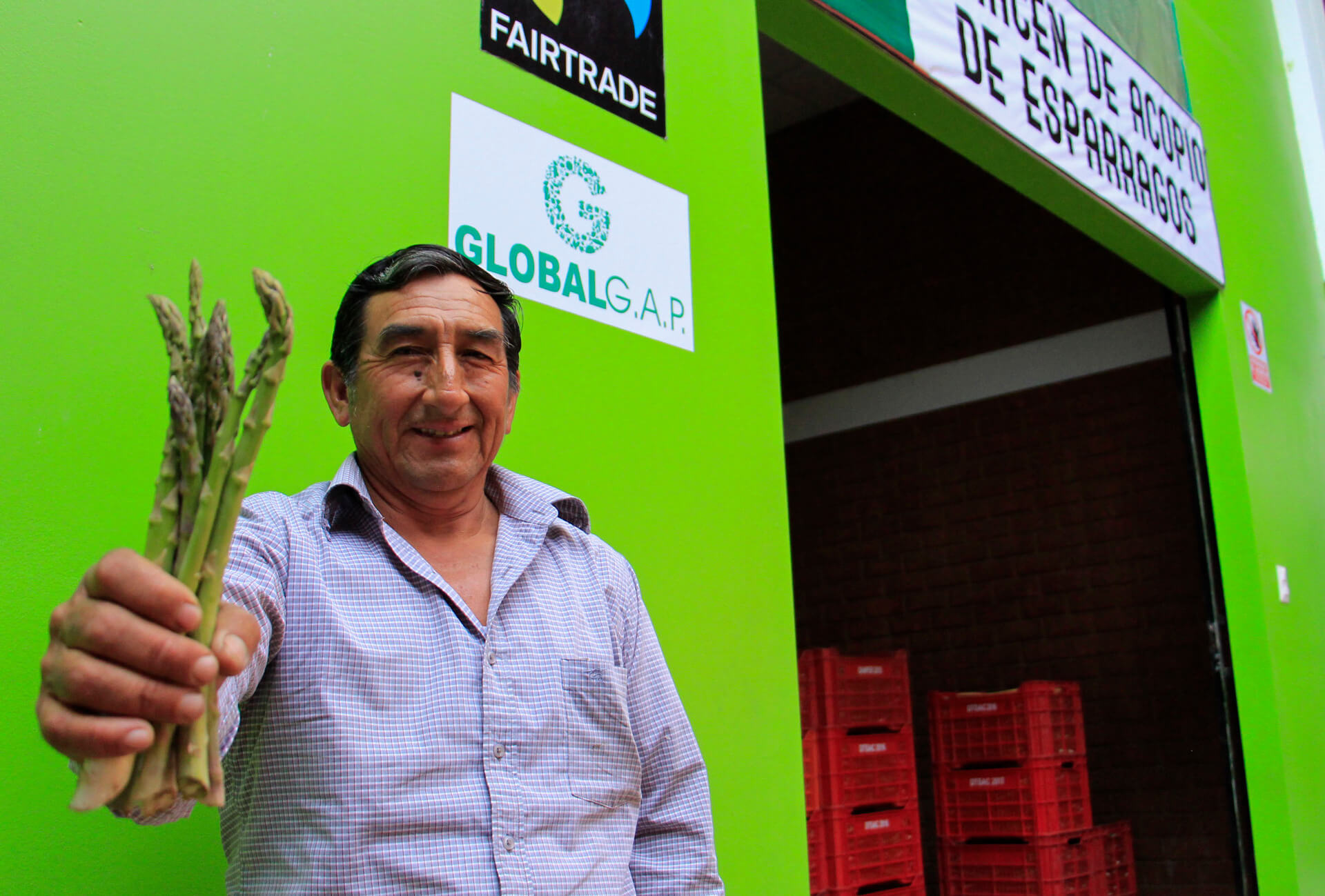An interview with Régis Goulet, Development Advisor at SOCODEVI
HuarmeyCoop: What’s the story behind the name?
Régis Goulet : “HuarmeyCoop is a cooperative located in the Huarmey-Culebras valley, a coastal area in the Ancash region of Peru. It’s an agricultural zone with a rich diversity of products grown in sandy soil. One such product is the asparagus produced by the member families of the cooperative, which is an organization supported by SOCODEVI. Today, HuarmeyCoop is gradually becoming a model agricultural cooperative for the whole country.”
What was the situation when SOCODEVI first got involved?
RG : “The road travelled by HuarmeyCoop producers up until now has not been easy. First, the region is regularly hit with natural disasters. Upon our arrival in the area in 2013, there was no cooperative and the farming families randomly worked on their plots of land with no technical assistance and very few resources. The quality of the asparagus was poor and did not meet market requirements. In such a context, it was difficult to break into the market and negotiate with the main national exporters to gain significant benefits for the families.”

Can you describe the work carried out with the producers?
RG : “With the support of the PRODIVCOM project, a SOCODEVI initiative supported financially by the Government of Canada, farming families set up a cooperative. HuarmeyCoop was created in December 2014 and had about forty member families at that time. We have put a lot of effort into increasing the service offerings and product quality, but also into governance and strengthening women’s leadership within the organization. Our teams have also worked very hard on a concise marketing strategy to strengthen the credibility of the new cooperative with exporters. Our goal was to increase the incomes of member families in a tangible and sustainable way.”
Reaching the international market was a big challenge, how did it happen?
RG : “We had to increase crop yields and obtain important certifications to meet the requirements of international clients. We also had to reduce production costs and invest in innovation to improve agricultural practices. Furthermore, we had to have high-quality business management supported by committed leaders. The technical assistance provided by our teams and implementation partners was essential to achieving this and, in 2017, the first container of HuarmeyCoop asparagus for export became a reality.”

Today, what results can be seen?
RG : “HuarmeyCoop asparagus is found in several countries and the entire Huarmey region benefits from this as the performance of this production chain has created around a hundred new jobs. Crop yields have increased by 10% and production costs have decreased by 15% and we are continuing to bring them down. Sales have increased by 300% since the creation of the cooperative and currently stand at over $1.2 million CAD. Finally, member families have seen their incomes increase by 25% since fair trade certification was obtained. In other words, the cooperative is now a key economic player and, above all, a source of great pride in the region.”
What is the outlook for HuarmeyCoop in the coming years?
RG : “Our involvement with the cooperative will end in March 2020, so there will be new challenges for the organization and its members. HuarmeyCoop will have to intensify its efforts and continue drafting a diversification strategy to offset fluctuations in the price of asparagus, considering that price variations were very significant during 2018. In addition, it must attract more young producers and craft a well-structured action plan to guide the handover to the next generation.”